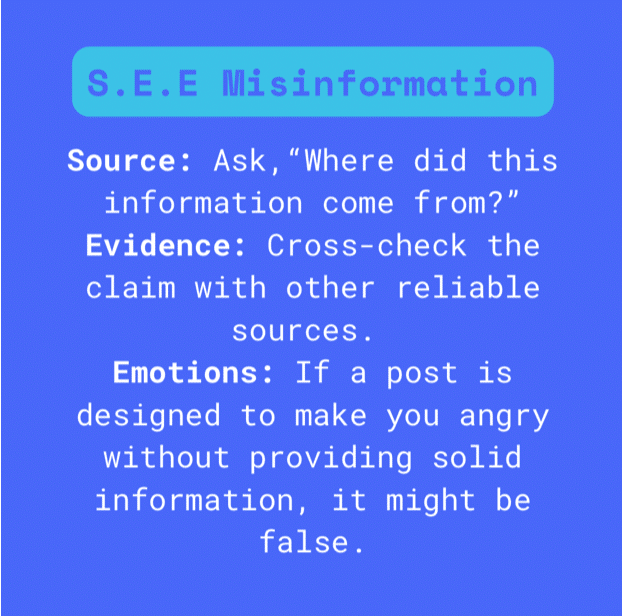Misinformation and Disinformation
Don’t Let It Fool You Again: 3 Red Flags to Catch When Stumbling Upon Fake Information!
Heard about the 1998 study linking vaccines to autism? Spoiler: it’s a myth. This article unpacks how misinformation (mistakes) and disinformation (lies) spread—like Andrew Wakefield’s debunked study that still fuels anti-vaccine beliefs, amplified by social media. The good news? You can fight back. Learn to spot red flags. By pausing and questioning what you read, you can stop fake info and make the internet smarter and safer.

“Don’t you know that vaccinating your kid causes autism?” An early study from 1998, by Andrew Wakefield found an apparent link between an MMR vaccine and autism. While these claims were easily disproved by multiple studies, it didn’t stop the rumors from spreading over the decades.
This single study may have been the single source that planted the seeds of anti-vaccination beliefs in thousands of people. News sources and media played their part in spreading the information. They might have done their job a little too well because even 36 years later, you can easily find a Reddit thread quoting the results of this study as foolproof reasoning.
Nowadays, misinformation is much more prevalent and spreads like wildfire. If in 1998 the effects of Wakefield’s study took a few months to spread around and create a notable impact, with today’s social media it would take us mere minutes to spread around the world.
Nowadays, misinformation is much more prevalent and spreads like wildfire.
If in 1998 the effects of Wakefield’s study took a few months to spread around and create a notable impact, with today’s social media it would take us mere minutes to spread around the world.
Let’s dive into what misinformation and disinformation can look like in today’s media. Disinformation refers to the intentional spreading of harmful content. An example could be someone creating a fake post in order to promote their product.
Misinformation refers to the unintentional spreading of false and possibly damaging information. Say you come across an Instagram post about the latest scandal and you send it to your friends, even though you might not have known it was fake, it still spreads harmful information quickly. In order to make sure we don’t repeat past mistakes it’s essential for us to understand a few red flags.
3 Red Flags to Watch Out For
- “One of the first red flags to watch for is how things are titled. If someone uses a ‘clickbait’ headline designed solely to grab attention, it could be a sign of misinformation. So, maybe that article about Kim Kardashian dropkicking a baby wasn’t exactly legit!”
- Another red flag is if the actual explanation or information seems oversimplified and doesn’t provide additional information. “Buy this product, and your ailments will be cured!” Notice how the title doesn’t specify any details or give statistics. If it seems too good to be true, it probably is.
- Lastly, if the source is trying to appeal to your emotions and create a sense of connection by using strong words, be cautious. They might try using words like toxic, threat, and dangerous to invoke a sense of fear. On the other hand they may use words such as vulnerable and heart breaking in their writing. These vague but emotionally charged words are designed to gain your sympathy. Just by taking note of these red flags, you can catch yourself before spreading false information.

Author: Taniska, 16
2024-2025 Youth Innovation Council
Need to talk?
Text NOFILTR to 741741 for immediate assistance.


